 Legend tells us Nero fiddled as Rome burned. Nearly two thirds of Rome was destroyed in 64 AD as the city was consumed in fire for over a week while the Emperor watched in delight. It is even widely believed Nero started the fires, knowing he could direct the resulting public outrage towards the Christians. This initiated history’s most horrific examples of Christian persecution; Christians were publicly fed to lions, crucified and burned at night as human torches.
Legend tells us Nero fiddled as Rome burned. Nearly two thirds of Rome was destroyed in 64 AD as the city was consumed in fire for over a week while the Emperor watched in delight. It is even widely believed Nero started the fires, knowing he could direct the resulting public outrage towards the Christians. This initiated history’s most horrific examples of Christian persecution; Christians were publicly fed to lions, crucified and burned at night as human torches.
In 1846, President James Polk, anxious to expand the American empire, had the U.S. army build a fort on the Rio Grande, some 150 miles south of the commonly accepted border between Texas and Mexico. After 16 U.S. soldiers died in a skirmish, Polk told Congress that Mexico had shed American blood upon the American soil. This claim was called the sheerest deception by a congressman named Abraham Lincoln. Nevertheless, the Mexican-American War was on and in 1848, Mexico, being out-gunned, signed a peace treaty ceding away half of its country for a paltry sum.
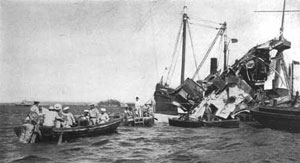 In 1898, the United States falsely accused Spain of blowing up a battleship, the USS Maine, which President McKinley had sent to Havana Harbor uninvited. This accusation, which led to the chant Remember the Maine, to hell with Spain, was used as a pretext to start the Spanish-American War, through which America took control of Cuba, Puerto Rico, and the Philippines. In the latter case, the United States, after helping the Filipinos defeat the Spanish, went to war against the Filipinos, claiming that they had fired on American soldiers. A quarter of a million Filipinos died in the resulting slaughter.
In 1898, the United States falsely accused Spain of blowing up a battleship, the USS Maine, which President McKinley had sent to Havana Harbor uninvited. This accusation, which led to the chant Remember the Maine, to hell with Spain, was used as a pretext to start the Spanish-American War, through which America took control of Cuba, Puerto Rico, and the Philippines. In the latter case, the United States, after helping the Filipinos defeat the Spanish, went to war against the Filipinos, claiming that they had fired on American soldiers. A quarter of a million Filipinos died in the resulting slaughter.
In 1931, Japan, which had been exploiting Manchuria for its resources, decided to take over the whole province. To have a pretext, the Japanese army blew up the tracks of its own railway near the Chinese military post of Mukden, then blamed the sabotage on Chinese soldiers.
Nazi Germany ¶
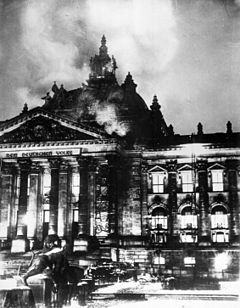 Hitler used the 1933 burning of the Reichstag (Parliament) building by a deranged Dutchman to declare a war on terrorism and to establish his legitimacy as a leader. “You are now witnessing the beginning of a great epoch in history”, he proclaimed, standing in front of the burned-out building, surrounded by national media. He used the occasion to declare an all-out war on terrorism and its ideological sponsors, a people, he said, who traced their origins to the Middle East and found motivation for their evil deeds in their religion.
Hitler used the 1933 burning of the Reichstag (Parliament) building by a deranged Dutchman to declare a war on terrorism and to establish his legitimacy as a leader. “You are now witnessing the beginning of a great epoch in history”, he proclaimed, standing in front of the burned-out building, surrounded by national media. He used the occasion to declare an all-out war on terrorism and its ideological sponsors, a people, he said, who traced their origins to the Middle East and found motivation for their evil deeds in their religion.
Two weeks later, the first prison for terrorists was built in Oranianberg, holding the first suspected allies of the infamous terrorist. In a national outburst of patriotism, the nation’s flag was everywhere, even printed in newspapers suitable for display.
Within four weeks of the terrorist attack, the nation’s now-popular leader had pushed through legislation, in the name of combating terrorism and fighting the philosophy he said spawned it, that suspended constitutional guarantees of free speech, privacy, and habeas corpus. Police could now intercept mail and wiretap phones; suspected terrorists could be imprisoned without specific charges and without access to their lawyers; police could sneak into people’s homes without warrants if the cases involved terrorism.
To get his patriotic Decree on the Protection of People and State passed over the objections of concerned legislators and civil libertarians, he agreed to put a 4-year sunset provision on it: if the national emergency provoked by the terrorist attack on the Reichstag building was over by then, the freedoms and rights would be returned to the people, and the police agencies would be re-restrained.
Within the first months after that terrorist attack, at the suggestion of a political advisor, he brought a formerly obscure word into common usage. Instead of referring to the nation by its name, he began to refer to it as The Fatherland. As hoped, people’s hearts swelled with pride, and the beginning of an us-versus-them mentality was sewn. Our land was the homeland, citizens thought: all others were simply foreign lands.
Within a year of the terrorist attack, Hitler’s advisors determined that the various local police and federal agencies around the nation were lacking the clear communication and overall coordinated administration necessary to deal with the terrorist threat facing the nation, including those citizens who were of Middle Eastern ancestry and thus probably terrorist sympathizers. He proposed a single new national agency to protect the security of the Fatherland, consolidating the actions of dozens of previously independent police, border, and investigative agencies under a single powerful leader.
Most Americans remember his Office of Fatherland Security, known as the Reichssicherheitshauptamt and Schutzstaffel, simply by its most famous agency’s initials: the SS.
And, perhaps most important, he invited his supporters in industry into the halls of government to help build his new detention camps, his new military, and his new empire which was to herald a thousand years of peace. Industry and government worked hand-in-glove, in a new type of pseudo-democracy first proposed by Mussolini and sustained by war.
(This same series of events has occurred in the wake of the 9/11 attacks.)
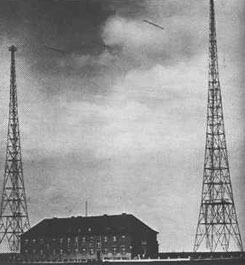
In 1939, Nazi government officials seized a radio station and broadcasted a message in Polish urging the Poles to attack the Germans; they immediately staged the attacks themselves. Consequently, Hitler told the German people they were being attacked by Polish insurgents, which provided the support he needed to invade Poland and to kick start World War II.
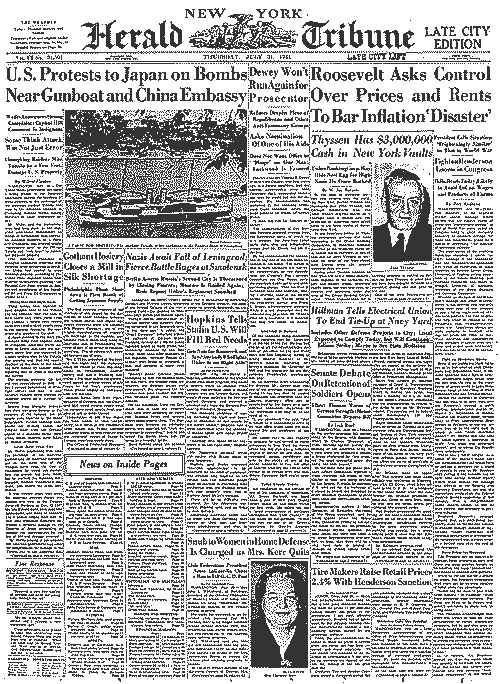
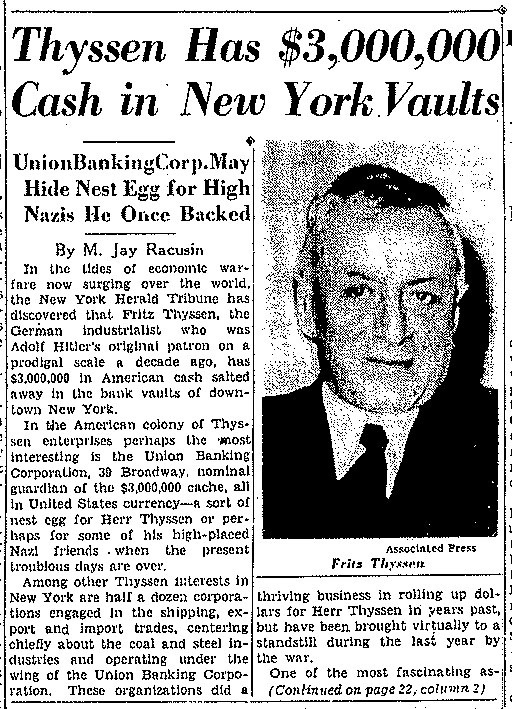

In December 1941, Franklin D. Roosevelt told the American people the attack on Pearl Harbor was an unprovoked surprise attack. It was neither. (If you doubt this, you can hear it from the horse’s mouth in Paul Wolfowitz’s address to West Point’s graduating class of 2001.) Using an 8-step plan provided to Roosevelt by the Office of Naval Intelligence, the U.S. government purposely provoked Japan into the attack to provide a cause for American involvement in World War II.
In 1964, Lyndon B. Johnson, with the help of the media, used the Gulf of Tonkin incident to support a cause for war in Vietnam. The American people were told the attacks were unprovoked; in reality, the attacks never occurred.
Operation Northwoods ¶
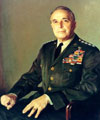
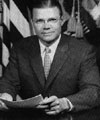 In March of 1962 Chairman of the Joint Chiefs of Staff Lyman Louis Lemnitzer presented a plan to Secretary of Defense Robert McNamara named Operation Northwoods. This document proposed staging terrorist attacks in and around Guantanamo Bay, Cuba to provide the pretext for military intervention in Cuba. The plans included starting rumors about Cuba via the media, then staging Cuban attacks, starting riots at the main gate, sabotaging ammunition and vehicles inside the base, bombing the base with mortar shells, sinking a ship, staging funerals for mock victims, staging a terror campaign in Miami and D.C., and the grand finale: blowing up a drone aircraft (with federal agents posing as college student victims) over Cuban waters.
In March of 1962 Chairman of the Joint Chiefs of Staff Lyman Louis Lemnitzer presented a plan to Secretary of Defense Robert McNamara named Operation Northwoods. This document proposed staging terrorist attacks in and around Guantanamo Bay, Cuba to provide the pretext for military intervention in Cuba. The plans included starting rumors about Cuba via the media, then staging Cuban attacks, starting riots at the main gate, sabotaging ammunition and vehicles inside the base, bombing the base with mortar shells, sinking a ship, staging funerals for mock victims, staging a terror campaign in Miami and D.C., and the grand finale: blowing up a drone aircraft (with federal agents posing as college student victims) over Cuban waters.
Although this plan was rejected, the declassified documents provide us with a clear understanding of what measures our government is willing to explore in order to accomplish their vision.